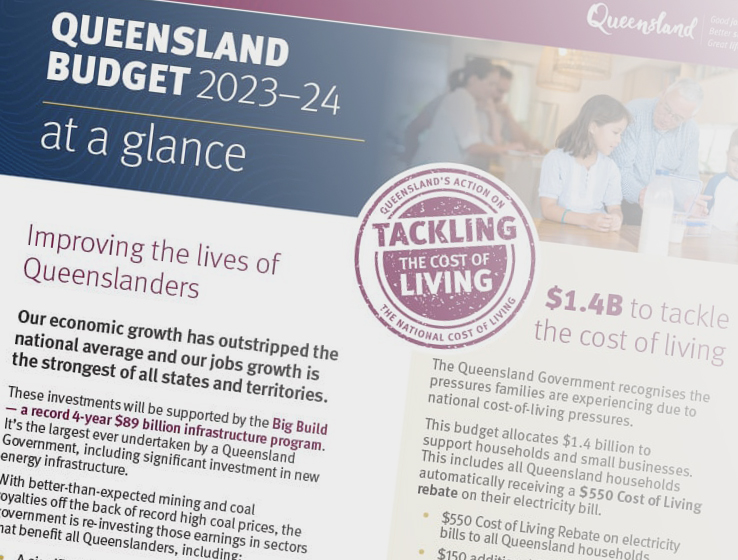No budget relief for public dental pressure pain

No promises of additional funding or new measures in the recent State Budget 2023-24 to support the oral health of Queenslanders.
While Queensland Health will receive $24.2 billion, a 9.6 per cent increase compared with last year’s health budget, again dental services do not feature as a priority for the Palaszczuk Government, as Oral Health Scheme allocations continue to drop in the background.
$185.9 million are allocated to oral health programs for the year ahead, up from just over $180 million in last year's budget, but this inflationary increase is not enough.
An extra $5 million funding for oral care would only deliver an estimated 6,024 extra courses of basic treatment (at $830) to eligible patients. The total on waiting list as of April 2023 was 128,490 people[1].
Moreover, the estimated average value of a course of general public dental care has risen from $600 to $830 (27.7%) from last year. The 6.5% increase in the Oral Health funding this year would not cover this increase at all.
This means that more vulnerable Queenslanders will experience long waiting times for public dental care, and this is unacceptable in 2023.
In the 10 months from 1 July 2022 to 30 April 2023, 1,356,444 Queenslanders have been on the dental waiting list, with over 12,000 experiencing a wait over six times the Queensland Health’s own recommended times. Almost 2,000 of those who received treatment (including just the preliminary assessment) had been waiting for over three years. In October 2022, 45,000 patients had been waiting over double the recommended time; 1,245 patients waited over six times the recommended time for their treatment level. The overall number of Queenslanders eligible to access public dental care is over 1.2 million (as of Dec 2022).
ADAQ acknowledges the growing pressures on the hospital services over the last few years. However, we suggest the government should take a closer look into how more efficient dental care services focused on prevention can reduce not only the overall burden on the health system, but also the rates of preventable hospitalisations due to dental conditions, and thus contribute to ease pressure for emergency departments.
Potentially preventable hospitalisations related to dental care in Queensland grew from 12,800 back in 2012, to over 19,000 in 2020-21[2]. Untreated decay affects people who rely public dental services in higher numbers..[3]
The National Partnership Agreement (NPA) funding for public dental has again been extended for another financial year. While it’s clear that a longer-term federal funding strategy needs to be urgently negotiated, a state funding cut by almost 20% does not keep up with the costs of providing public care.
Oral health care is a state-based responsibility in Australia. Queensland’s public dental workforce is increasingly under pressure to provide an adequate level of care their communities deserve, and this budget only adds to this pressure and uncertainty.
The Palaszczuk Government’s ‘record’ health budget promises to deliver to all Queenslanders, no matter where they live: however, a commitment on resuming charge of fluoridation and related funding is absent. Once again, it will be left to local councils to decide on, and fund, what is a state public health responsibility.
Many studies have found that children in non-fluoridated areas experience higher rates of hospitalisation due to dental conditions. Ensuring everyone has access to fluoridated water, even in remote communities, is a low-cost, no-brainer way to ensure the preventable dental disease ‘pressure point’ on the state health system eases. It is surprising that the Queensland Government would miss this opportunity again.
Some of the positives in this year’s state budget include extra investment in women’s healthcare and mental health services. We would like to see some funding trickle down to support public and volunteer private services which provide dental care persons who experienced domestic and family violence. Mental wellbeing is heavily affected when you have difficulty eating, speaking, smiling, socialising because of pain, missing teeth, or bad breath; quality of life and self-esteem plummet as a result.
Future state budgets should better consider the impact of the overall social costs of poor dental health, which are always too high at any life stage: for children, poor learning, and nutritional and growth problems; for adults, there’s loss of productivity at work.
The Queensland State Budget 2023-24 also claims to invest in ‘an age-friendly Queensland’, ramping up support for services and initiatives for seniors and future generations. ADAQ is hopeful that this investment will include oral health care initiatives for seniors in residential aged care or home care.
The Australian Dental Association Queensland Branch vows to ramp up its advocacy work to ensure improved oral health and access to ethical and effective dental care that all Queenslanders deserve.
[1] Source: https://www.data.qld.gov.au/dataset/public-dental-waiting-list
[2] Source: AIHW Oral health and dental care in Australia, Hospitalisations - Australian Institute of Health and Welfare (aihw.gov.au)
[3] Source: AIHW Oral health and dental care in Australia, Healthy teeth - Australian Institute of Health and Welfare (aihw.gov.au)
More News Stories